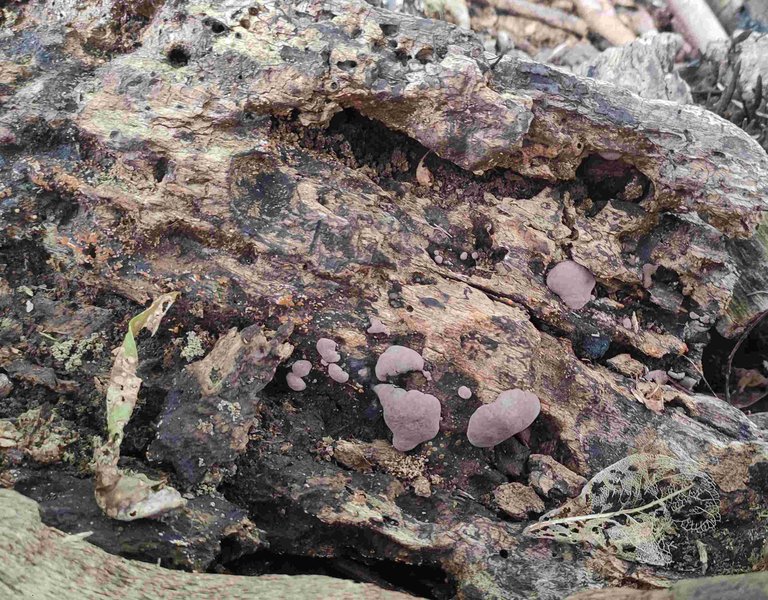
Hoy es viernes, así que ¡Feliz #FungiFriday para todos! Hoy continúo compartiendo los hongos que puedo encontrar en mi solar, ya que es temporada de lluvias, y son los únicos meses en los cuales aparecen estos organismos en esta área de mi casa. Ha llovido mucho esta última semana, así que cuando voy al solar estoy muy atenta para encontrar setas para fotografiar.

Debajo de la acerola más grande, hay gran cantidad de restos vegetales, las ramas de un olivo que antes estaba allí, por lo que es común que puedan verse hongos de diversa naturaleza. En una de las ramas muertas, pude observar unas circunferencias grisáceas, que sin dudas eran hongos. Al hacer la comparativa de imágenes con Google Lens, encontré la coincidencia de que son Enteridium lycoperdon, también conocidos como Hongos de luna, y su sinónimo es Reticularia lycoperdon.

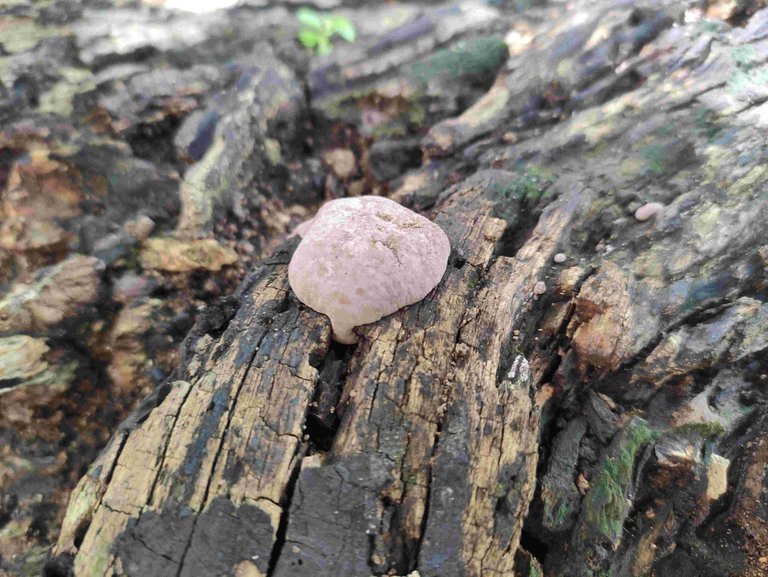

Pude ver varios grupos de hongos, algunos con formas circulares, otros más irregulares. Nunca los observé en solitario, sino en pequeños grupos de 2 a 6 ejemplares. El color es extraño, pues algunos son grisáceos, otros de un tono marrón, casi sepia, supongo que depende del grado de maduración de estos especímenes.
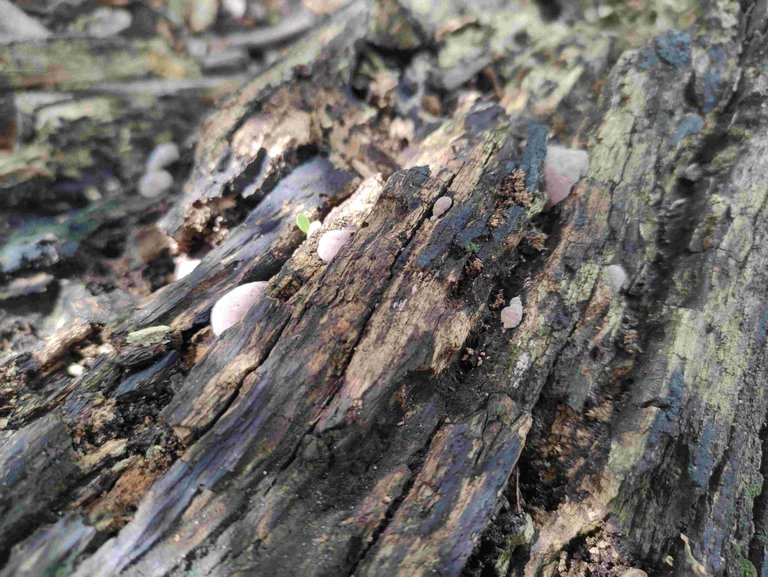
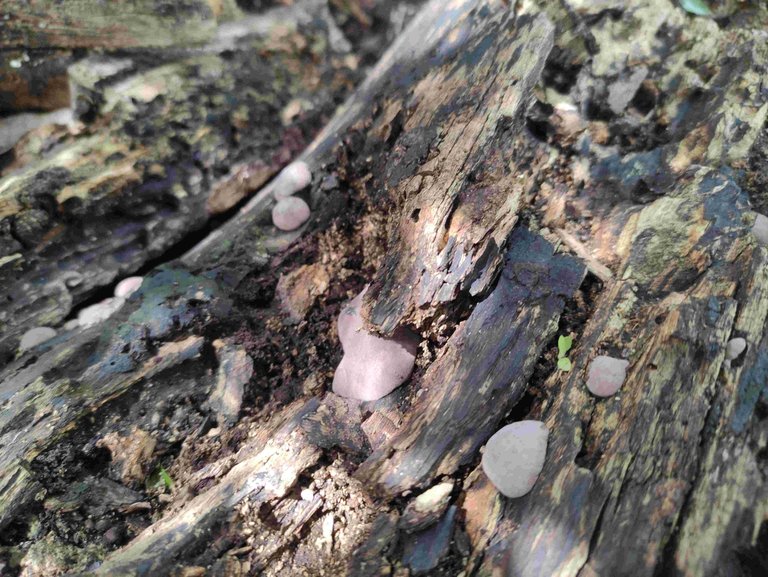
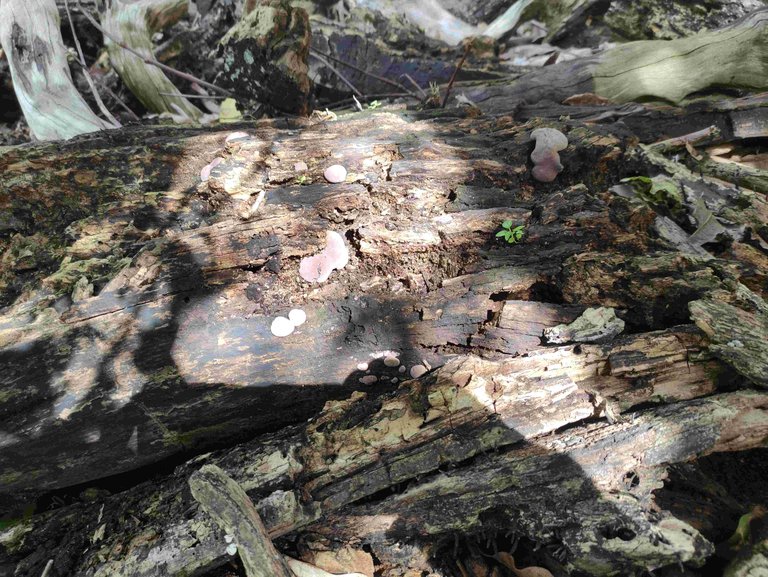

Estos organismos son raros, ya que no tienen pie ni sombrero, sólo son una masa amorfa, con tendencia a mostrarse en forma redonda, circular. Al revisar la bibliografía (ver los links al final de este post), encontré que es un mixomiceto, específicamente de la familia Reticulariaceae, recordemos que su otro nombre científico es Reticularia lycoperdon, y de acuerdo a la definición de un mixomiceto, no es un hongo, sino un organismo protista, es decir, que no es animal, no es hongo, ni es planta. Son seres muy raros de observar, pues pueden ser unicelulares, como también se puede presentar en grupos, están conformados por células eucariotas; por tanto, lo que encontré no es un hongo raro, sino un mixomiceto, organismo que no encaja en ninguna clasificación, sino que es algo diferente.
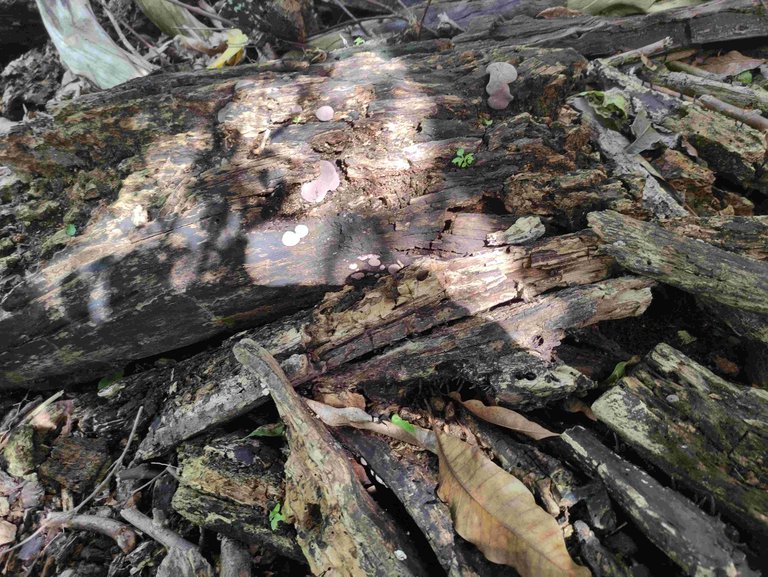
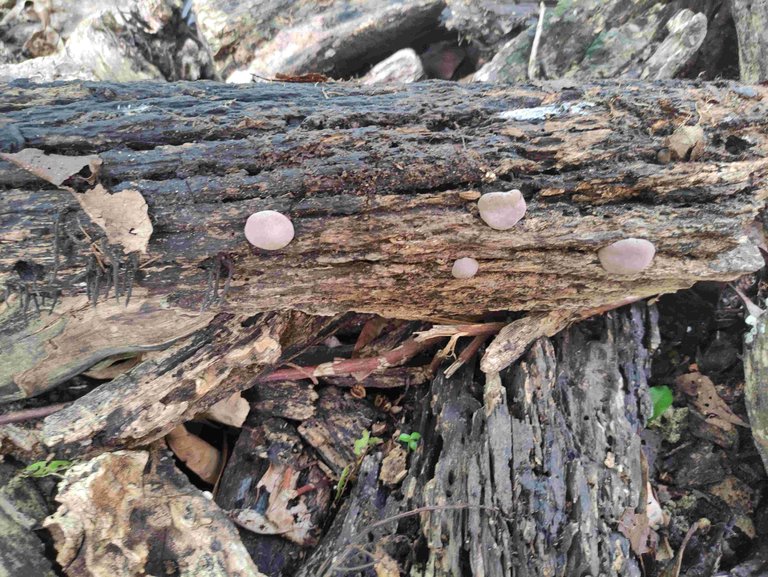

They are very rare organisms to see, which grow in conditions of high humidity, which is corroborated by the frequent rains that have fallen where I live in recent days.
They grow on trunks and bark of dead trees, so they are saprophytes.
They are made up of AMEBAS, (this is very strange), which group together, fuse, to form a large mass, which is obviously visible to the naked eye.
They are basically slime molds, and they fulfill an important function for ecosystems, as Wikipedia indicates: “They are cleaners that engulf bacteria, fungi, yeasts and decomposing organic matter, then expelling the inedible material.” ; However, although these organisms generate a material not suitable for human consumption, and although much literature indicates that it is not edible, there are regions towards the South of Mexico, where the inhabitants prepare them fried, or cook them for a long time in ashes. hot, but wrapped in corn husks, as if they were tamales; but they have a certain specific technique in their cooking and consumption, since they must be eaten practically immediately. I wouldn't particularly dare to eat them, because here they are not part of the traditional menu of the region.
Apparently they exist all over the planet, but are rarely observed.
The length is variable, and can reach 10 cm in diameter.
Its color can vary from white, gray, off-white, silver, brown or sepia.
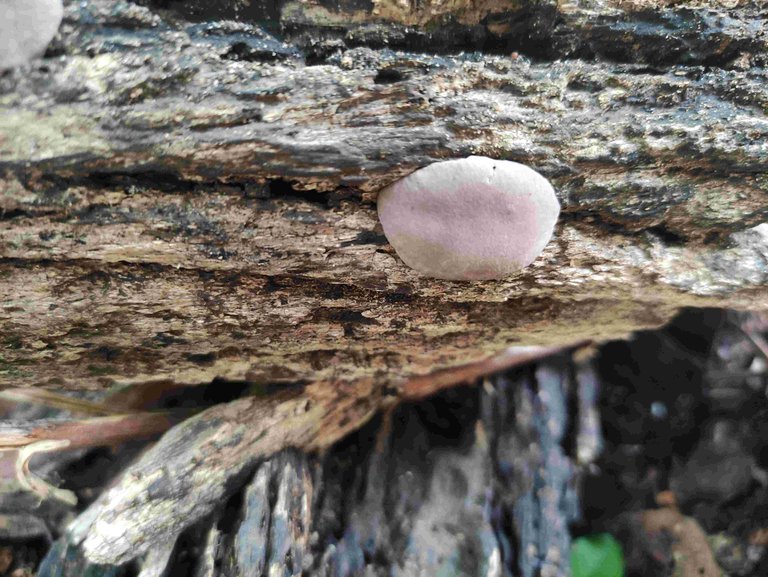
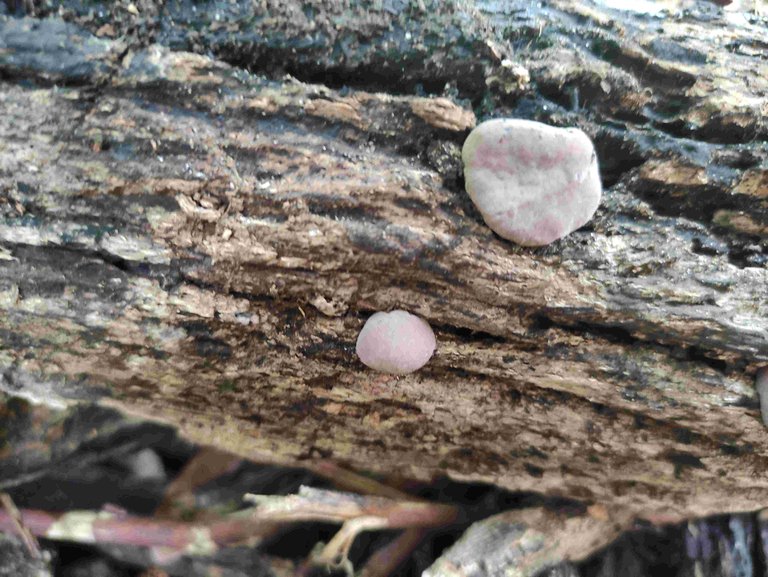
De acuerdo a la bibliografía especializada, (ver los enlaces consultados al final de este post), estos mixomicetos presentan las siguientes características generales:
Son organismos muy raros de ver, que crecen en condiciones de alta humedad, lo que corroboro por las frecuentes lluvias que han caído en donde vivo en estos últimos días.
Crecen en troncos y cortezas de árboles muertos, por lo que son saprófitos.
Están conformados por AMEBAS, (esto es bien extraño), que se agrupan, se fusionan, para formar una gran masa, que obviamente, es visible a simple vista.
Son básicamente mohos mucilaginosos, y cumplen una importante función para los ecosistemas, tal como indica Wikipedia: “Son limpiadores que engullen bacterias, hongos, levaduras y materia orgánica en descomposición, expulsando luego el material no comestible.” ; sin embargo, aunque éstos organismos generan un material no apto para el consumo humano, y aunque mucha bibliografía señala que no es comestible, hay regiones hacia el Sur de México, en donde los pobladores los preparan fritos, o los cocinan por largo tiempo en ceniza caliente, pero envueltos en hojas de maíz, como si fuesen unos tamales; pero tienen cierta técnica específica en su cocción y consumo, pues deben ser comidos prácticamente de forma inmediata. Yo particularmente no me atrevería a comerlos, porque aquí no forman parte del menú tradicional de la región.
Al parecer existen en todo el planeta, pero raramente se observan.
La longitud es variable, pudiendo alcanzar los 10 cm de diámetro.
Su color puede variar de blanco, gris, color hueso, plata, marrón o sepia.
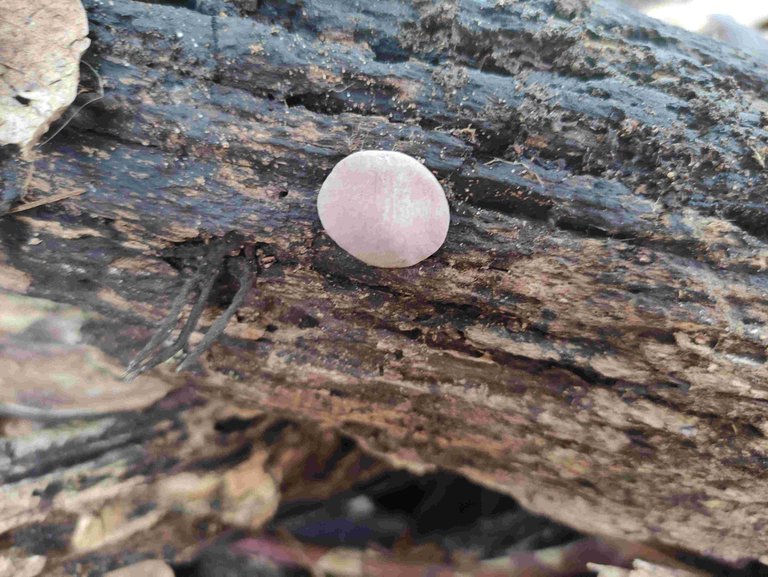
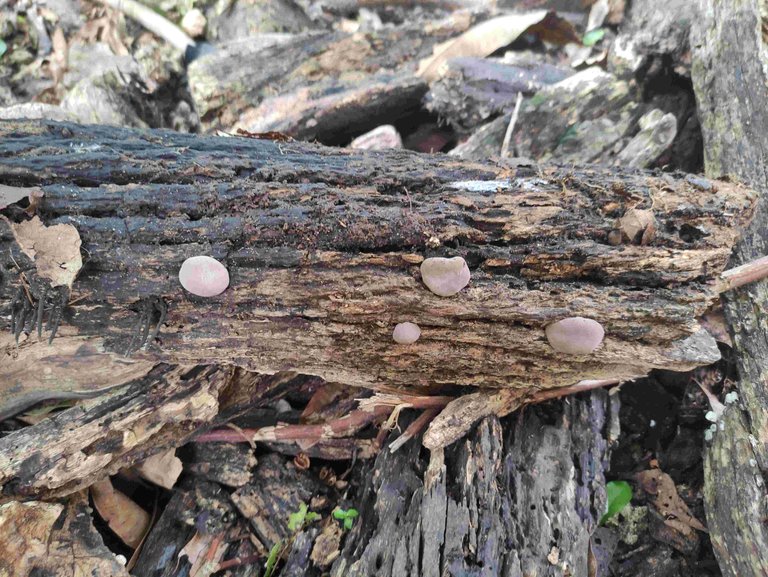

Aquí finalizo mi post de hoy, en el cual quise compartir unos organismos, que a simple vista podemos pensar que son hongos, pero resultan ser algo más, y son muy raros de ver también. Saludos a todos, y recuerden que todos los seres vivos, son importantísimos para la vida en nuestro planeta. ¡Abrazos!

Todas las fotos de este post son de mi autoría y fueron tomadas con mi teléfono Xiomi REDMI 9 A // These photos are my own, and were taken with a Xiomi REDMI A phone
Los divisores son cortesía de @eve66 quien comparte bellos diseños que embellecen el maquetado de nuestras publicaciones. // The dividers used are courtesy of @eve66 who shares beautiful designs that embellish the layout of our post.

Todo el contenido, excepto los divisores, es de mi propiedad y está sujeto a derechos de autor // All content except the dividers is my property and subject to copyrigh



Delegations welcome!

Delegations welcome!

Posted Using InLeo Alpha
